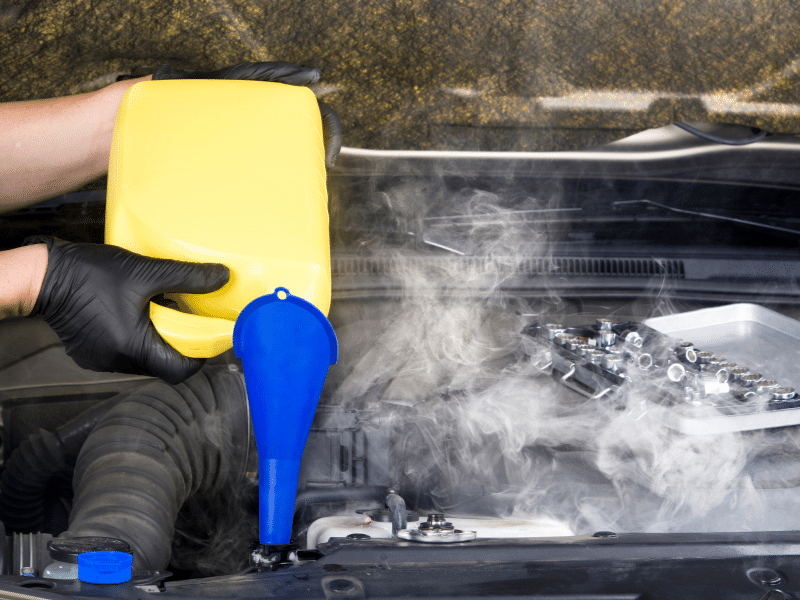How to detect radiator leak?
Radiators are heat exchangers used for cooling internal combustion engines in vehicles. The process begins when the thermostat detects excess heat. The radiator automatically releases coolant and water that flow towards the engine to absorb excess heat and cool it down. A damaged radiator can cause coolant loss and accumulate rust over time. When the radiator is not cleaned properly, the coolant flow will be obstructed, and this can cause serious damage. To avoid this, you must watch out for some common signs of a radiator leak., which include:
Puddles of coolant
If you see a puddle of coolant underneath your car, it is an obvious sign of a radiator leak. However, not all puddles underneath your car are a coolant problem. Sometimes, it’s just condensation from your air conditioning. You should closely observe the puddle. If the liquid looks blue, yellow, or green, then it is most likely the coolant. If you can’t figure out the color, just grab a paper towel and dab at the fluid to find out. Also check if the liquid feels greasy and has a sweet smell. If your answer to these questions is a yes, then you are definitely dealing with a coolant leak.
Discoloration or corrosion
When the radiator leak has been present for a long time, it can cause discoloration or corrosion. You will be able to see the discoloration or corrosion on the underside of the radiator and the neighboring components that may come in contact with the coolant. In case you see discoloration or corrosion, you must not ignore it. Have an auto mechanic take a look at your vehicle right away.
Radiator is hissing
If your radiator is hissing, it is a sign of a coolant leak from the radiator or some other component of the cooling system. A hissing sound can also result from a malfunctioning radiator fan, due to which the water in the radiator doesn’t get cooled properly. It can also be due to a leaky radiator cap.
Low coolant levels
Ideally, the coolant levels should remain constant. In case the level drops, it is a sign of a leak somewhere in the system. Turn off the engine and let it cool, then take a look at the radiator water tank and make sure it is between the maximum and minimum mark. In case the level is low, you can check the coolant level in the radiator. You will have to take off the pressurized radiator cap and see that the coolant level is up to the top of the reservoir. If not, it could be due to a leak.
White smoke
White exhaust smoke is a likely result of cooling system problems. The smoke may come out from under the hood or out of the tailpipe. It is a sign of an internal coolant leak, which causes the coolant to burn out. When you see smoke coming out from the hood, you should immediately pull over.
Frequent engine overheating
This is a clear sign that something is wrong with the radiator. However, a radiator leak is not the only reason that might cause engine overheating. It can also result from a faulty radiator fan, a damaged water pump, or clogged or detached coolant hoses. The exact problem can only be diagnosed by a mechanic.
If you are experiencing any of these problems, you should have an auto mechanic take a look. Ignoring the problem for too long can necessitate expensive repairs. Get in touch with our team if you have concerns about radiator leaks. We will diagnose the problem and advise you on the situation’s urgency.


